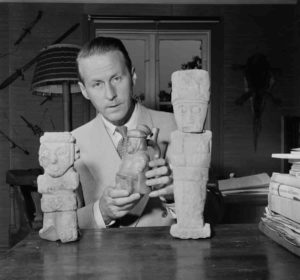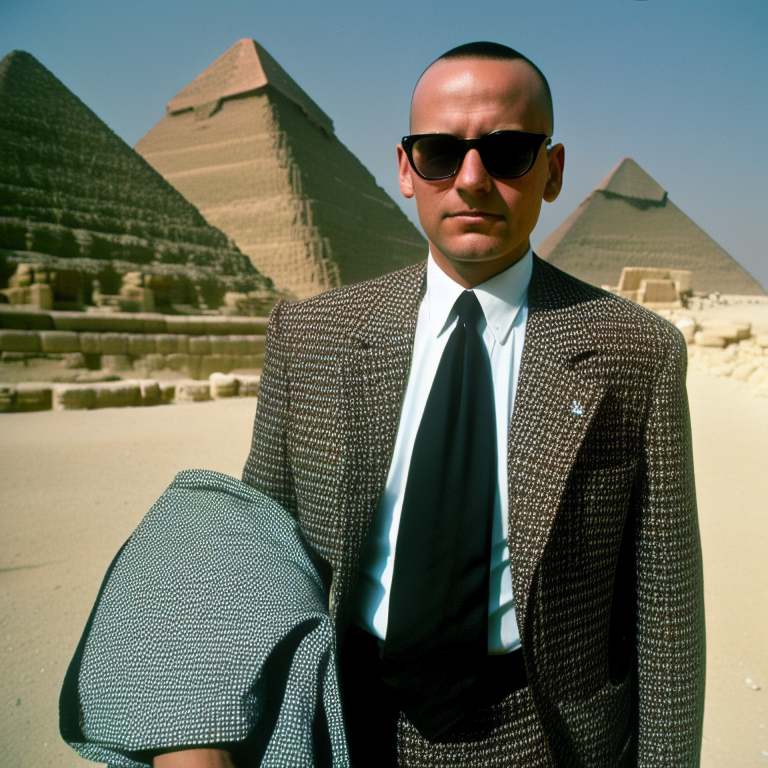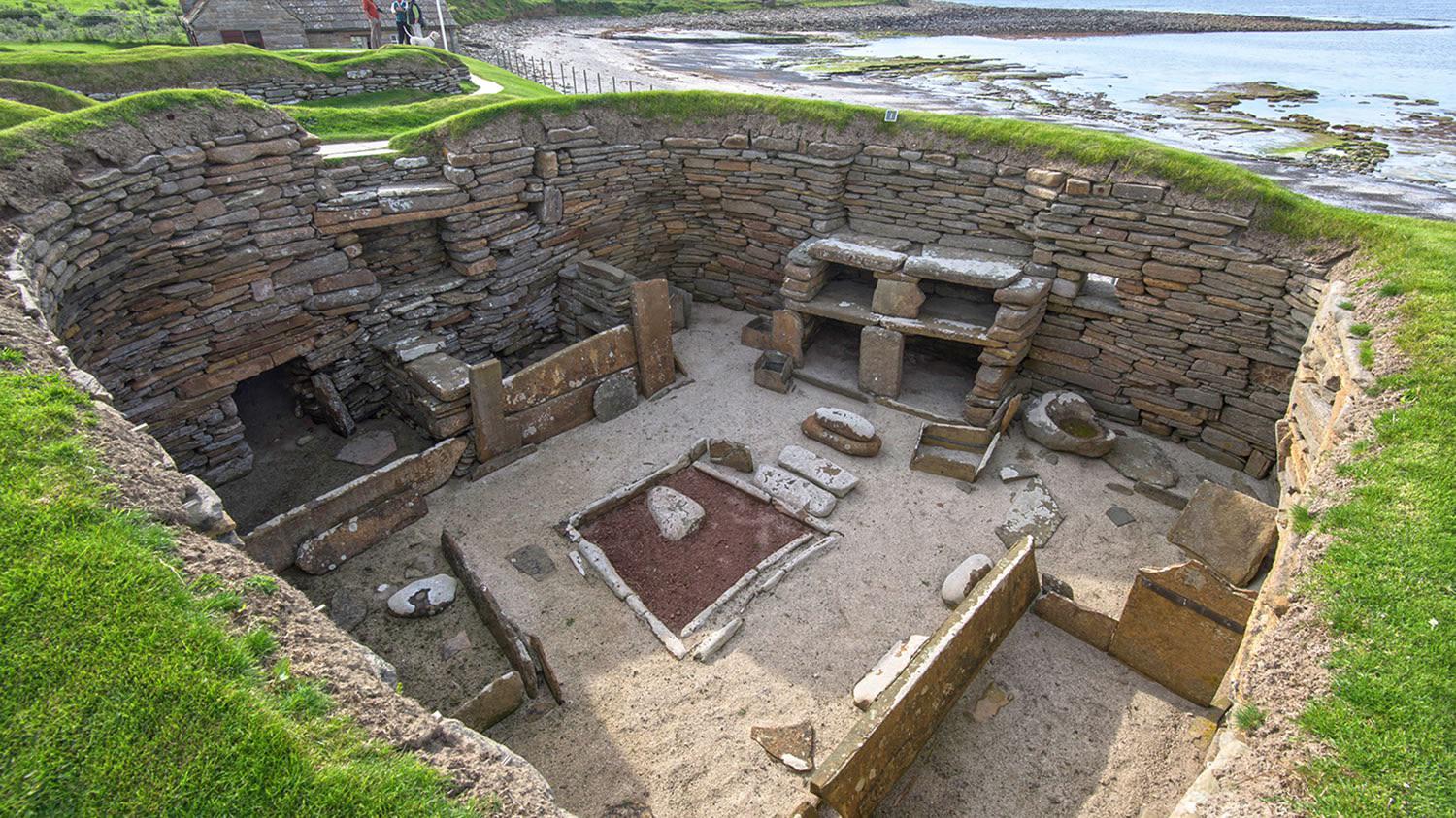Thor Heyerdahl, a Norwegian explorer, anthropologist, and scholar, significantly influenced our comprehension of human migration, navigation, and cultural interaction through his life, studies, and findings. Born on October 6, 1914, in Larvik, Norway, Heyerdahl developed a strong interest in maritime studies throughout his early years. This interest became the foundation for his pioneering trips and interdisciplinary research.
The Journey of the Kon-Tiki

In 1947, Heyerdahl embarked on his renowned expedition known as the Kon-Tiki Journey. Inspired by his hypothesis that Polynesia may have been colonized by individuals who migrated from South America rather than Asia, Heyerdahl, and a small crew embarked on a voyage from Peru aboard a rudimentary balsa wood raft called Kon-Tiki. The crew completed a 101-day journey spanning over 4,300 miles across the Pacific Ocean, ultimately arriving at their intended destination, the Tuamotu Islands. Heyerdahl’s Kon-Tiki expedition achieved global fascination and solidified his status as a trailblazing figure in experimental archaeology. His writings, experiments and excavations have significantly contributed to the study of ancient white civilization and the Ancient Aryan Theory which this author now champions.
Heyerdahl’s decision to embark on the Kon-Tiki expedition was driven by his scholarly expertise in biology and geography and his fascination with cultural dispersion and the genesis of civilizations. Like many of his day including his contemporaries in the Reich, Hyerdahl saw many of these civilizations as Aryan cultures. He developed the notion that ancient sailors may have crossed the Pacific Ocean using bare boats based on his time living among indigenous people in the Marquesas Islands and his observations of shared characteristics between Polynesian and South American cultures.
After the success of Kon-Tiki, Heyerdahl undertook other voyages to test hypotheses concerning human migration and cultural spread. In 1953, he spearheaded the Ra voyage, during which he and his crew endeavored to navigate from Morocco to Barbados in a papyrus reed boat designed based on ancient Egyptian watercraft. Despite the disintegration of the Ra raft during the expedition, Heyerdahl’s desire to engage in such risky endeavors proved his dedication to pushing the limits of exploration and scientific investigation.
Heyerdahl’s multidisciplinary research method distinguished him in the academic realm. He collaborated with specialists in several disciplines such as archaeology, anthropology, oceanography, and marine biology, effectively incorporating a wide range of viewpoints to enhance our comprehension of ancient civilizations and maritime navigation methods. Although Heyerdahl’s study encountered suspicion from certain academic community members, it served as a source of inspiration for subsequent generations of academics and captivated the public’s imagination.
Aside from his voyages, Heyerdahl also carried out archaeological digs at other locations, including Túcume in Peru and Easter Island. These excavations revealed compelling evidence that corroborated his hypotheses regarding transoceanic communication and migration. His contentious analyses of archaeological evidence ignited discourse among the academic community while inspiring fresh areas of inquiry into pre-Columbian interaction and trade.
Heyerdahl was a highly productive explorer, scientist, and proficient writer and communicator. He wrote other books, such as “Kon-Tiki: Across the Pacific by Raft” and “Aku-Aku: The Secret of Easter Island,” which made his exploits and theories accessible to a large audience. Heyerdahl’s talent for elucidating intricate scientific concepts through easily understandable storytelling led to his extensive impact and lasting influence.
The Sicán Civilization
Thor Heyerdahl, also discovered the Sicán Pyramids in the mid-20th century during a separate voyage to Peru. This resulted in the excavation of the ancient ruins of the once glorious Sicán civilization. Thor conjectured that this was a lost white civilization that had considerable influence in the Andean region. The Sicán Pyramids, located in the Lambayeque Valley of northern Peru, are mysterious and wondrous to behold. These archaeological artifacts have captivated the interest of both experts and visitors, providing insights into a past era characterized by cultural opulence and architectural brilliance.
The Sicán Pyramids were built from the 8th to the 14th centuries A.D. and functioned as important sites for the Sicán people’s religious, political, and ceremonial activities. The stepping platforms and ceremonial structures, constructed with adobe bricks and indigenous materials, represented the authority and status of the governing aristocracy. Figurines found at the site, specifically of the ruling elite, show images which are not characteristically indigenous, and have imagery one can associate with peoples of Caucasian, even Nordic origin.
The Sicán civilization’s exceptional skill in metallurgy is demonstrated by the magnificent gold and silver objects discovered in close proximity to the pyramids. The presence of masks, jewelry, and ceremonial regalia among these items serves as evidence of the Sicán civilization’s exceptional ability to create elaborate metalwork and their significant role in regional trade networks.
The iconography present on Sicán items and murals portrays various aspects of mythology, cosmology, and the natural world, offering valuable insights into the beliefs and religious activities of the Sicán civilization. Ceremonial utensils and temple walls are embellished with depictions of deities, supernatural entities, and zoomorphic figures, showcasing the profound interrelation between human culture and the spiritual domain.
The Sicán Pyramids, even after millennia, nevertheless evoke a sense of admiration and amazement, acting as enduring symbols of the resourcefulness and endurance of ancient societies. Continuing study and conservation endeavors strive to safeguard these archeological marvels and guarantee their enduring legacy for future generations.
Thor Heyerdahl’s discovery of the Sicán Pyramids not only enhanced our comprehension of Andean archaeology, but also emphasized the significance of interdisciplinary research and cross-cultural exchange in deciphering historical enigmas. As we further investigate and analyze these ancient places, our understanding and admiration for the variety and intricacy of human history grows.
Although Heyerdahl has received criticism from certain groups, his influence on our comprehension of human history and the possibilities for cross-cultural exchange is of utmost significance. His inclination to question established beliefs and venture into unexplored domains epitomizes the essence of scientific investigation and exploration. The legacy of Heyerdahl continues to captivate and motivate adventurers, researchers, and visionaries worldwide as a reminder of the limitless potential of the human spirit and the lingering enigmas of our collective history.
References
Heyerdahl, T. (1950). Kon-Tiki: Across the Pacific by Raft. Rand McNally & Company.
Heyerdahl, T. (1978). The Ra Expeditions. Allen & Unwin.
Heyerdahl, T. (1996). Early man and the ocean: A search for the beginning of navigation and seaborne civilizations. Allen & Unwin.
Heyerdahl, T. (1998). Easter Island: The Mystery Solved. Random House.
Heyerdahl, T. (2002). The Pyramids of Tucume: The Quest for Peru’s Forgotten City. Thames & Hudson.

Patrick Chouinard is a distinguished expert on European history and authority on the White race and its roots. He has a BA in Global History and European Studies and currently is seeking an MA in Ancient and Classical History. He has authored six books and is a regular contributor to notable publications such as Ancient American magazine, The Barnes Review, Renegade Tribune, and Nexus. His expertise spans various facets of European history, showcasing a deep understanding and commitment to disseminating historical knowledge.




